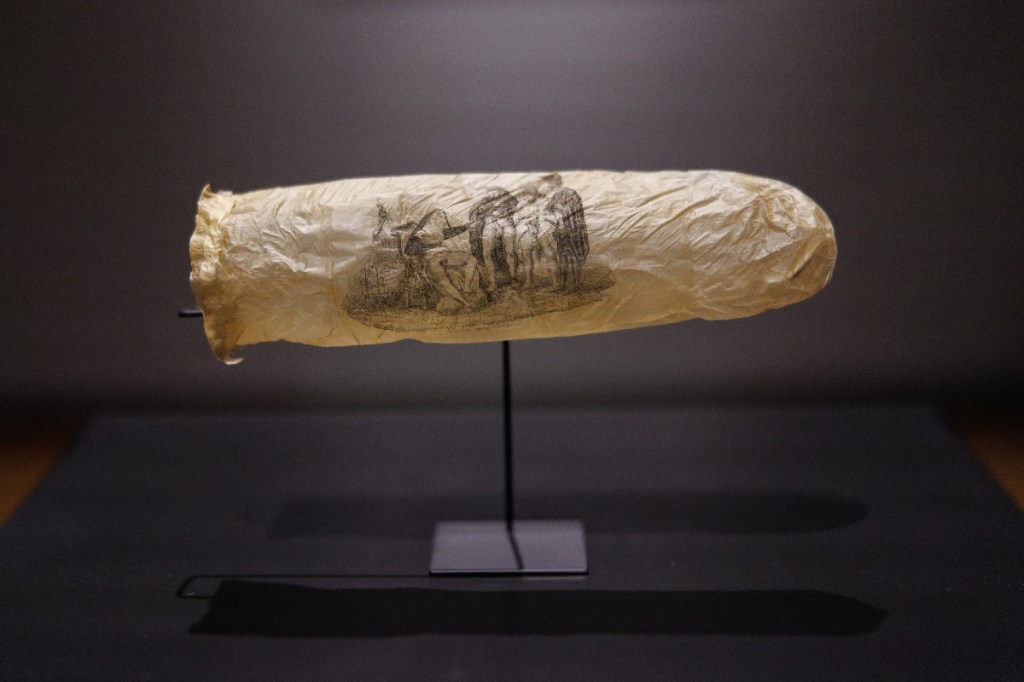A Series on the technology Of revolution
A lot has been made of technology and its role in the revolutions sweeping through the Middle East. There are breathless tweets about a “twitter revolution.” Malcolm Gladwell peevishly points out that people have been overthrowing governments for a long time. Technology be damned.
Motherboard has reported extensively on the role of communication, of faxes, of Youtube, and yes (with appropriate snark), twitter.
Videos by VICE
We wondered about the implications of Wael Ghonim, a Google exec, starting the Facebook page that helped organize the revolution.
But Facebook is not the only book out there, and anyone considering to overthrow of a dictatorship would do well to consider older, more analog tools for revolution.
Respect Your Elders
Mao Zedong and Che Guevara both published guides to revolution and guerrilla warfare, and, with all due respect, I’m inclined to believe that they knew what they were talking about. But before them, there was Lenin.
In Letters on Tactics Lenin lays out our language:
The passing of state power from one class to another is the first, the principal, the basic sign of a revolution, both in the strictly scientific and in the practical political meaning of that term.
And in What Is To Be Done?, he provides us with a fundamental tenant: “Without revolutionary theory there can be no revolutionary movement.”
That Lenin defines revolution in terms of class struggle is a given; similarly unsurprising are his thoughts on what form that struggle might take.
The proletariat … may, among other means of achieving a social revolution, also have recourse to a military strike.
Lenin’s writing is incredibly extensive — seriously, take a look at the archive on marxists.org — but most of it is pretty theoretical, or very Soviet-specific. For the real nitty gritty, we have to look at the later fighters for socialism.
Mao Zedong wrote On Guerrilla Warfare as a guide for organized resistance against Japanese occupation, based in roughly equal measures on Sun Tzu’s The Art Of War and strong communist ideology:
We must unite the strength of the army with that of the people, we must strike the weak spots in the enemy’s flanks, in his front, in his rear. We must make war everywhere and cause dispersal of his forces and dissipation of his strength. Thus the time will come when a gradual change will become evident in the relative position of ourselves and our enemy, and when that day comes, it will be the beginning of our ultimate victory over the Japanese.
But he also employed specific instructions on how guerrilla units were to form, and act:
All guerrilla units start from nothing and grow. What methods should we select to ensure the conservation and development of our own strength and the destruction of that of the enemy? The essential requirements are the six listed below:
- Retention of the initiative; alertness; carefully planned tactical attacks in a war of strategical defence; tactical speed in a war strategically protracted, tactical operations on exterior lines in a war conducts strategically on interior lines.
- Conduct of operations to complement those of the regular army.
- The establishment of bases.
- A clear understanding of the relationship that exits between the attack and the defence.
- The development of mobile operations.
- Correct command.
It’s Emancipation by Bullet Point
Still, Che came after Mao and his writings (which include the famous “Guerrilla Warfare”) are inspired not by ancient Chinese strategy, but by, if we are to believe him, personal experience in the Cuban civil war.
In them, Guevera lays out fundamental strategy, both for fomenting revolution and for carrying it out.
While the latter is the kind of practical information that undoubtedly helped revolutionaries throught the Americas plan their attacks, the former is more interesting for the purpose of this article.
In the begining of Gurella Warfare Che writes that the Cuban Revolution contributed “three fundamental lessons” for revolutionary movements:
- Popular forces can win a war against the army.
- It is not necessary to wait until all conditions for making revolution exist; the insurrection can create them.
- In underdeveloped America the countryside is the basic area for armed fighting.
The second and third points are the really new ideas, and together they make up the central tenants of foco theory, which essentially suggests that revolutionary evangelists (in this case, cadres) can work effectively with the peasants to create revolution.
Political scientist, Joshua Johnson emphasizes that says that the second point represents a major break from conventional Marxist theory, whereby the proletariat must build class-consciousness through the development of advanced capitalism, revolutionary solidarity through the collective experience of class oppression, and then finally a revolution by the proletariat.
It should not, however, be taken to mean that revolutionaries have open season, even in pleasant, functional countries. According to Che:
It must always be kept in mind that there is a necessary minimum without which the establishment and consolidation of the first center is not practicable. People must see clearly the futility of maintaining the fight for social goals within the framework of civil debate. When the forces of oppression come to maintain themselves in power against established law, peace is considered already broken.
Peaceful Resistance
A good understanding of tradition is healthy, but these days most of what Mao and Che suggest would be labeled terrorism. We could quibble about the semantics separating terrorism from freedom fighting, but it seems safest to suggest that, for the most part, peaceful demonstrations (or, mostly peaceful demonstrations) are the strategy du jour these days.
There are how-to guides for those too, and they can be split into (roughly) two categories: guides to social activism within the system (like, say, the G20 protests), and more targeted guides for actively changing the system. The fundamental difference being the kind of country in which said protests are going on.
Take, for example, Saul Alinsky’s 1971 Rules For Radicals, a “pragmatic primer for realistic radicals.” Alinsky was an organizer from Chicago, with a lot of social action under his belt, but his rules suggest a certain environment. An example:
Rule 6: A good tactic is one your people enjoy. “If your people aren’t having a ball doing it, there is something very wrong with the tactic.”
That makes a lot of sense when you’re coming in as an outside group, trying to organize for better resources in urban american ghettos, and it would be nice if you could party your way out of a despoitc regime, but for serious cases, Gene Sharp’s Conceptual Framework for Liberation is the book you want to read.
Currently in it’s fourth edition, Sharp’s book is widely regarded as the guide to ousting governments. He talks about everything from the “merits and limitations of negotiations” to “spreading the idea of noncooperation” and eventually “disintegrating the dictatorship.” Appendix 1 lists 198 methods of nonviolent action.
Originally written in an attempt to help in Burma, the advice is general enough to be applied anywhere.
According to a BBC article by Ruaridh Arrow (who has a documentary coming out about Sharp this spring), protesters in Iran’s Green Revolution were said to have used more than 100 of the 198 methods. His guide has been translated into to at least thirty-one languages, and Sharp’s methods have been used around the world, from Thailand to Gabon.
More recently, in Egypt, Arrow reports talking to one of the democracy movement’s organizers.
“One of the main points which we used was Sharp’s idea of identifying a regime’s pillars of support,” he said. “If we could build a relationship with the army, Mubarak’s biggest pillar of support, to get them on our side, then we knew he would quickly be finished.”
The Egyptian organizers had their own, more specialized guide too, which The Atlantic posted on January 27th. Translated excerpts are available on the original post while the whole guide is available for download from Public Intelligence.
The producers of the pamphlet start by asking that it be distributed only on a person-to-person basis, as an email attachment or a photocopy. “Twiter and facebook (sic) are being monitored,” they write. “Be careful not to let this fall into the hands of the police or state security.” They repeat the request on the last page, with a final addendum.
“Now that you know, please pass it on!”
For further reading, check out this MIT Syllabus for 21H.001 How to Stage a Revolution
More
From VICE
-

Photo by Rijksmuseum/Kelly Schenk -

Photo by Tibor Bognar via Getty Images -

De'Longhi Dedica Duo – Credit: De'Longhi -

We Are/Getty Images